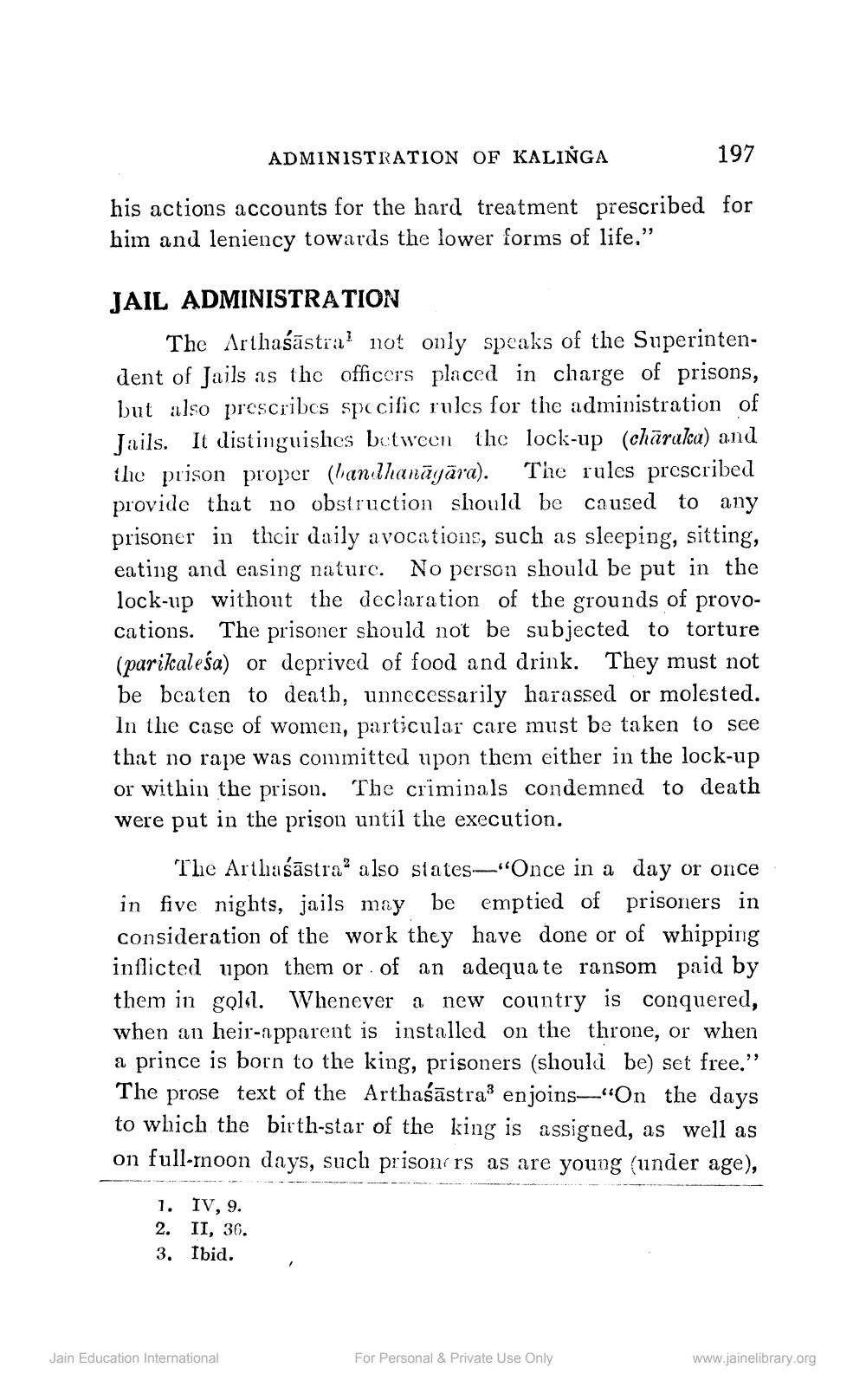________________
ADMINISTRATION OF KALINGA
197
his actions accounts for the hard treatment prescribed for him and leniency towards the lower forms of life.”
JAIL ADMINISTRATION
The Arthaśāstra? not only speaks of the Superintendent of Jails as the officers placed in charge of prisons, but also prescribes specific rules for the administration of Jails. It distinguishes between the lock-up (chāraka) and the prison proper (ban thanāgāra). The rules prescribed provide that no obstruction should be caused to any prisoner in thcir daily a vocations, such as sleeping, sitting, eating and easing nature. No person should be put in the lock-up without the declaration of the grounds of provocations. The prisoner should not be subjected to torture (parikaleśa) or deprived of food and drink. They must not be beaten to death, unnecessarily harassed or molested. In the case of women, particular care must be taken to see that no rape was committed upon them either in the lock-up or within the prison. The criminals condemned to death were put in the prison until the execution.
The Arthaśāstra” also states—“Once in a day or once in five nights, jails may be emptied of prisoners in consideration of the work they have done or of whipping inflicted upon them or of an adequa te ransom paid by them in gold. Whenever a new country is conquered, when an heir-apparent is installed on the throne, or when a prince is born to the king, prisoners (should be) set free.” The prose text of the Arthaśāstra enjoins—"On the days to which the birth-star of the king is assigned, as well as on full-moon days, such prisoners as are young (under age),
1. IV, 9. 2. II, 36. 3. Ibid.
Jain Education International
For Personal & Private Use Only
www.jainelibrary.org




